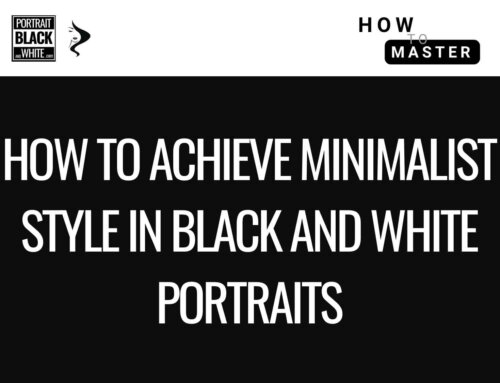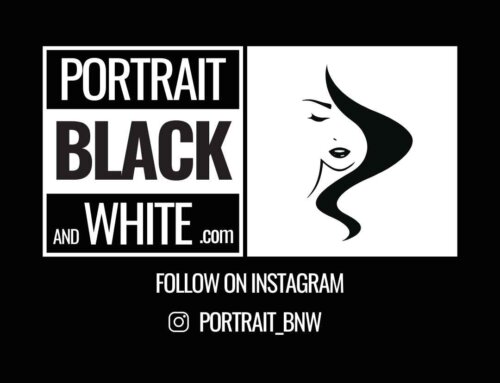In black and white portraiture, shadows are not the enemy—they are the language. Without color to distract, shadows define form, mood, and atmosphere. They give portraits depth, tension, and mystery. Used carelessly, shadows can hide detail or swallow expression. Used intentionally, they sculpt faces, tell stories, and elevate a simple likeness into something cinematic.
This guide explores how to see, shape, and control shadows in black and white portraits, turning them into a creative ally rather than a technical problem.
Why Shadows Matter More in Black and White
Color photography allows separation through hues: a red shirt against a green wall can pop regardless of light. In monochrome, everything is reduced to luminance. This makes shadows the primary tool for separation and depth.
- Shadows define edges. The curve of a cheek, the line of a jaw, the ridge of a nose—all gain shape through shadow transitions.
- Shadows suggest mood. Soft shadows whisper tenderness; hard shadows demand attention.
- Shadows guide the eye. By darkening what’s less important, shadows direct focus toward what matters most.
A portrait without meaningful shadows risks looking flat or emotionless.
Reading Natural Light: Where Shadows Begin
Shadows are born from the relationship between light source size, distance, and angle.
- Large, close sources (big window, softbox) produce gradual, open shadows.
- Small, distant sources (bare bulb, midday sun) create crisp, hard-edged shadows.
- Angle matters. Light from the side sculpts depth; light from the front flattens; light from above carves dramatic eye sockets and cheek hollows.
By simply shifting the subject’s angle to the light, shadows transform without any equipment change.
Creative Shadow Patterns in Portraiture
Classic lighting setups demonstrate how shadows create different emotional tones in portraits:
- Rembrandt Lighting: A small triangle of light under one eye, formed by cheek shadow meeting nose shadow. It suggests depth and seriousness without being overly harsh.
- Split Lighting: One side of the face fully lit, the other in shadow. This emphasizes structure and intensity, often used for dramatic or edgy portraits.
- Loop Lighting: A gentle nose shadow looping toward the cheek. Balanced and versatile, it adds shape without overpowering expression.
- Butterfly Lighting: Light directly above and in front, creating a butterfly-shaped nose shadow. Flattering for symmetry, but can appear glamorous rather than raw.
These patterns are not rules but starting points. Knowing them allows intentional variation.
Using Negative Fill to Sculpt
Shadows don’t only come from adding light—they also come from subtracting it. Negative fill means placing a dark surface (black card, curtain, wall) near the subject to absorb light and deepen shadows naturally.
For black and white portraits, negative fill is invaluable:
- Enhances jawline definition.
- Prevents flatness in overcast conditions.
- Creates subtle contrast without resorting to heavy editing.
Even a dark jacket or a shaded corner can serve as negative fill when working on location.
Shadows as Narrative Tools
Shadows can do more than shape a face—they can carry meaning.
- Partial concealment: A shadow covering part of the eyes suggests mystery or introspection.
- High-contrast shadows: Deep divisions across the face evoke conflict, duality, or strength.
- Environmental shadows: Casting patterns from blinds, trees, or architecture introduces symbolic layers—a sense of enclosure, freedom, or time passing.
The key is aligning shadow use with the story of the portrait. A joyful, open portrait rarely benefits from severe split lighting; a contemplative or dramatic portrait thrives in it.
Editing Shadows: Enhancement Without Destruction
In post-production, shadows are often pushed too far. Crushed blacks may look bold on screen but destroy texture in print. Instead:
- Protect detail. Keep some gradation in shadow regions—total black should be rare and intentional.
- Dodge and burn for sculpting. Lighten key features (eyes, lips) while darkening less important areas. This refines shadow direction rather than replacing it.
- Avoid global “contrast” fixes. Shadows should vary across the portrait; a single slider rarely respects subtle transitions.
Shadows in editing should feel natural, as if the light itself created them.
Practical Exercises for Shadow Control
- One-window practice: Photograph a subject near a window, rotating them in 15° increments. Observe how shadows change with each turn.
- Negative fill test: Place a dark object on one side of the face in overcast conditions. Compare results with and without it.
- Shadow play: Use an object with patterns (curtains, blinds, lace) to cast textured shadows across the face. Study how these affect mood.
- High vs. low key: Shoot the same subject with shadows lifted (soft, even light) and then with shadows deepened (hard, directional light). Notice how the same expression feels different.
These exercises train the eye to anticipate shadow behavior rather than fix it later.
Common Pitfalls When Using Shadows
- Over-crushing blacks: Creates drama but erases information, making portraits look cheap.
- Misplaced nose shadows: A shadow touching the lip or stretching awkwardly across the cheek distracts rather than shapes.
- Ignoring catchlights: A strong shadow with dead eyes (no light reflection) kills the portrait’s energy. Always protect a spark in the eyes.
- Flat fill: Overfilling shadows with reflectors to “fix” them can erase the mood entirely.
Good shadows are intentional, not accidental.
Final Thought
Shadows are not flaws to correct—they are the essence of black and white portraiture. They sculpt the face, frame emotion, and transform a simple likeness into something expressive. To use shadows creatively is to understand that depth and mood live as much in darkness as in light.
In monochrome, shadows are not just absence; they are presence. Mastering them means embracing both what they reveal and what they conceal, and learning that the strongest portraits often speak through what remains hidden.




Scrivi un commento